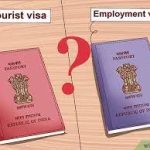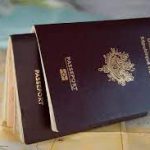Are you a business traveler planning to visit India for work? If so, navigating the country’s visa system can be quite daunting. With its complex procedures and requirements, obtaining an Indian visa can seem overwhelming at first. However, don’t let it deter you from your travel plans! In this step-by-step guide, we’ll walk you through everything you need to know about securing an Indian visa as a business traveler. From understanding the different types of visas available to providing tips on filling out your application correctly, we’ve got you covered. So sit back and read on – soon enough, you’ll be ready to navigate the Indian visa system with ease!
What is a Visa?
A visa is a document that permits a foreign national to enter and stay in a particular country for a specific period of time. Different countries have different types of visas, which can be obtained through various means, including applications at the embassy or consulate of the country you wish to visit, booking an online visa application service, or through travel agents. Indian Visa for BUSINESS TRAVELERS
When applying for a visa, it is important to keep in mind that some countries require applicants to have prior hotel reservations or airfare tickets before submitting an application. It is also advisable to research the requirements of the country you are visiting before traveling so that you are familiar with any restrictions that may apply. For example, some countries prohibit tourist visits between certain periods of the year due to political unrest or security concerns.
Once you have obtained your visa, it is important to keep all required documentation on hand in case you are asked to present it during your stay in the country. This includes your passport photo page, valid passport (if using a photocopy), visa application form (if applicable), as well as any other required documents.
Types of Indian Visas
The Indian visa system is complex and confusing, but it doesn’t have to be. With the help of this guide, you can breeze through the process and get your visa in no time.
There are three types of Indian visas: tourist visas, business visas, and employment visas. Each has its own set of requirements and rules that must be followed while applying. Here’s a brief overview of each type:
Tourist visas are for visitors who are only visiting India for tourism purposes. They do not allow you to work, study, or stay more than 90 days in India. To qualify for a tourist visa, you must meet certain eligibility requirements, including having a valid passport and proof of funds enough to cover your expenses while in India. Indian Visa HOW TO READ DATES
Business visas are for foreigners who want to conduct business in India. They allow you to stay in India for up to six months and work during that time. To qualify for a business visa, you must provide evidence that you will use the trip to conduct legitimate business activities in India and that you have the financial resources necessary to support yourself while in India.
Employment visas are for foreigners who want to work in India temporarily as employees of Indian companies or organizations. Employment visas provide an unrestricted stay in India and let workers live and work anywhere they choose within the country. To qualify for an employment visa, you must have a job offer from an Indian company or organization and meet other eligibility requirements, such as having a valid passport and
How to Apply for an Indian Visa
If you are traveling to India for business, you’ll need to apply for a visa. There are a few different types of visas that you may need, depending on your nationality and the purpose of your trip. This guide will walk you through the process of applying for an Indian visa, based on your individual circumstances.
First things first: make sure that you have all the necessary paperwork ready before you start applying. You’ll need your passport information, visa application form (available at most embassy or consulate websites), proof of travel arrangements (a letter from your travel agent or airline confirming dates and itinerary), and money to cover any fees associated with your visa application.
Next, find an embassy or consulate in India that is aligned with your destination country. The website of the Indian Embassy in Washington DC has a search tool that can help you find the nearest office. Most embassies require applicants to complete an online application form, but some accept paper applications as well. Be sure to read the instructions carefully before starting the application process; many common mistakes can lead to delays or rejection of your visa application.
Once you’ve submitted all of your paperwork and paid any required fees, it’s time to wait for a response from the embassy or consulate. It can take several weeks for officials there to review and approve your application, so be patient – although it’s worth checking back regularly just in case there’s some unexpected news in the meantime.
When it looks like your application is finally
How to Extend Your Indian Visa
If you are planning to travel to India for business, there are a few things you should know about the Indian visa system. Here is a step-by-step guide on how to navigate the process and extend your visa:
1. First, make sure you have all of the required documents ready. Your passport, visa application form, two recent photographs (taken within the last six months), and a copy of your passport page where your visa is noted should be enough.
2. Next, head over to the Indian embassy or consulate closest to your location. Once there, complete an application form and pay the applicable fees. Make sure to bring all of the required documents with you when you visit the embassy or consulate.
3. Once your application is processed, you will receive an email notification specifying the date of your interview at the embassy or consulate. Make sure to arrive early on that day so that everything can be finalized quickly.
4. After your interview is completed, you will receive a visa card in the mail authorizing you to stay in India for up to six months as long as all other requirements – such as returning back home after each trip – are met. You are also expected to report back to the embassy or consulate every 90 days for updates on your status and new paperwork that may need filing (if any).
Conclusion
Planning a business trip to India? Congratulations – you’re in for a daunting task! The Indian visa system can be incredibly confusing and frustrating, but with the help of this guide, you’ll be able to navigate through it with ease. In this article, we’ll go over every step of the visa process, from researching your destination to applying for a visa. We hope that by following our tips, you’ll be able to make your trip planning easier and faster than ever before. So without further ado, let’s get started!


